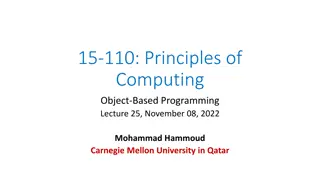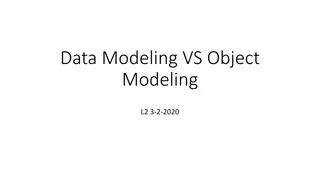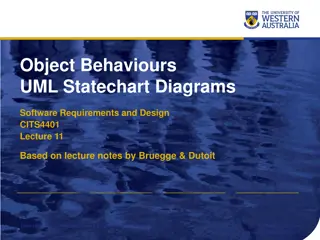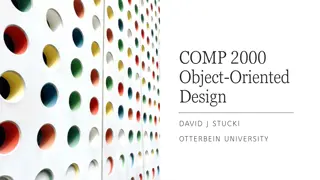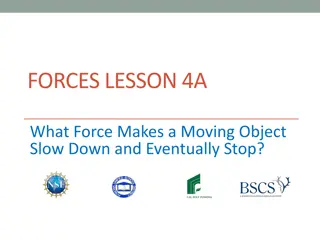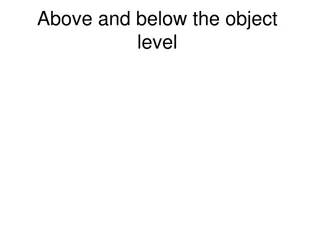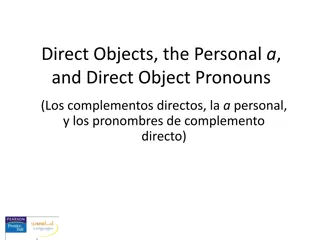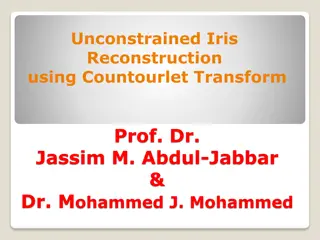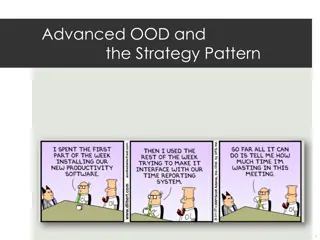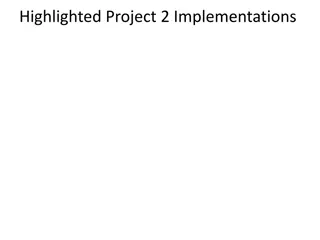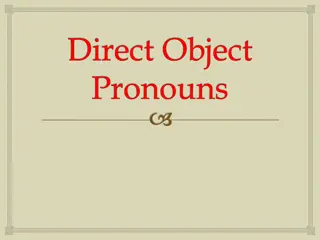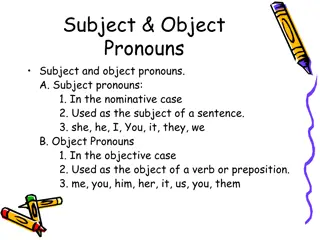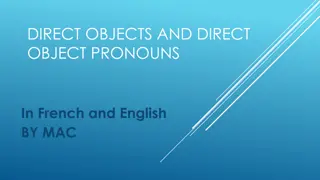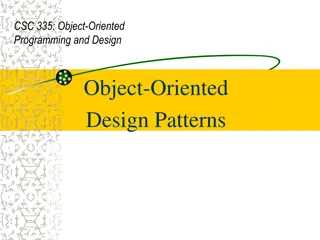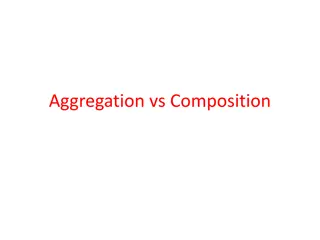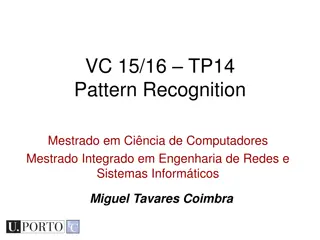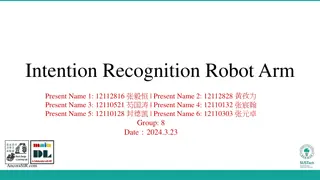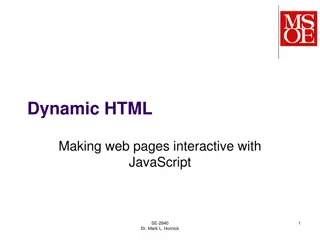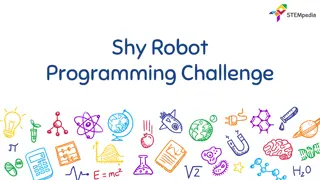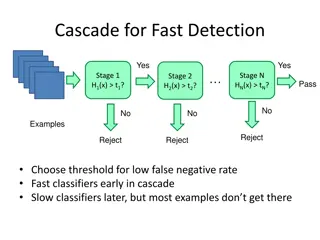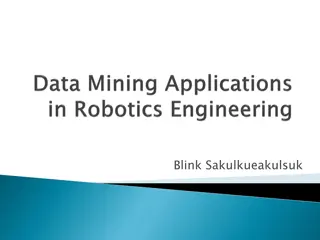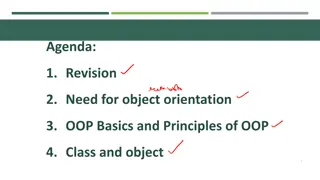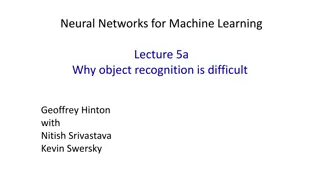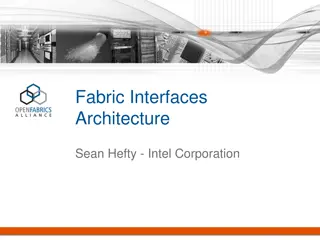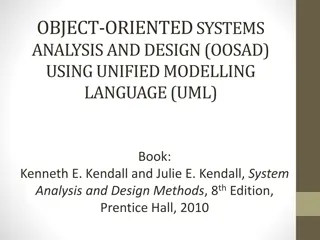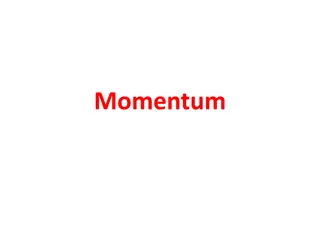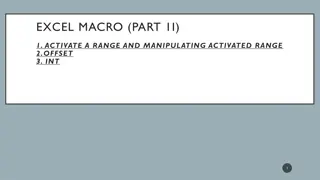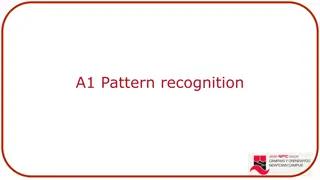Java Allocation and C2
Java object allocation and escape analysis play crucial roles in memory management and performance optimization within the Java Virtual Machine (JVM). This comprehensive overview covers topics such as object vs. scalar allocation, object allocation mechanisms, hotspot escape analysis, ideal and conn
3 views • 22 slides
Energy Wheel & Hazard Recognition Toolbox Talk
Hazard recognition is crucial for safety in all activities. Hazards can range from gravity and motion to mechanical and chemical risks. Failure to identify hazards can lead to incidents, making tools like the Energy Wheel key for improving recognition. The Energy Wheel enhances hazard recognition by
2 views • 10 slides
Wall Object Elijah | Houseofmishka.co.uk
Discover the unique and emotional touch of Houseofmishka.co.uk Wall Object Elijah. Elevate your home decor with our handcrafted pieces.\n\n\/\/houseofmishka.co.uk\/product\/wall-object-elijah\/
3 views • 1 slides
Object-Based Programming in Python: Exploring Classes and Constructors
Understanding object-based programming in Python involves creating classes with attributes and methods to build objects. By utilizing class constructors, you can initialize objects with specific values, allowing for unique instances with distinct characteristics. This tutorial covers the fundamental
2 views • 16 slides
Data Modeling vs Object Modeling
Data modeling involves exploring data-oriented structures, identifying entity types, and assigning attributes similar to class modeling in object-oriented development. Object models should not be solely based on existing data schemas due to impedance mismatches between object and relational paradigm
0 views • 17 slides
Object Behaviors and Statechart Diagrams in Software Design
Object behaviors and UML statechart diagrams play a crucial role in software requirements and design. State machines, transitions, events, and states are essential concepts in modeling object behavior in response to external events. By utilizing UML statechart diagrams, one can effectively represent
0 views • 23 slides
Automatic Recognition of Higher Education Qualifications Treaty Summary
Importance of automatic recognition of qualifications in higher education has been emphasized, leading to initiatives like the Treaty on Automatic Recognition of Higher Education Qualifications by Baltic and Benelux states. This treaty aims to enhance mutual trust, transparent recognition, and contr
1 views • 8 slides
Object Modeling in Software Development
Object modeling is a crucial concept in software development, capturing the static structure of a system by depicting objects, their relationships, attributes, and operations. This modeling method aids in demonstrating systems to stakeholders and promotes a deeper understanding of real-world entitie
1 views • 65 slides
Object-Oriented Design Principles
Explore the core concepts of object-oriented design, including objects, classes, and the object-oriented paradigm. Learn about the relationship between objects and classes, and how they form the building blocks of software development. Gain insights into class components, attributes, and methods, an
0 views • 18 slides
Forces: What Makes a Moving Object Slow Down and Stop?
The lesson delves into the forces that cause a moving object to slow down and eventually stop. It explores the concepts of friction and surface texture using real-world examples and data analysis. Students investigate patterns in object movement on different surfaces and make predictions about the i
0 views • 16 slides
Configuration Examples for IP SLA with Object Tracking
Learn how to configure and troubleshoot IP SLA with Object Tracking using detailed examples for Static Routing, HSRP, and Policy Based Routing. Find out where Object Tracking can be implemented and when not to use it in various network scenarios. Understand the configuration components, including de
2 views • 17 slides
Levels of Object Recognition in Computational Models
Explore the levels of object recognition in computational models, from single-object recognition to recognizing local configurations. Discover how minimizing variability aids in interpreting complex scenes and the challenges faced by deep neural networks in achieving human-level recognition on minim
0 views • 29 slides
Direct Objects and Direct Object Pronouns
Direct objects receive the direct action of the verb, and when they are people or domesticated animals, the personal "a" is used. Direct object pronouns replace the object to avoid repetition. Learn more about the personal "a", its usage, and how to identify direct objects in sentences.
0 views • 53 slides
Active Object Recognition Using Vocabulary Trees: Experiment Details and COIL Dataset Visualizations
This presentation explores active object recognition using vocabulary trees by Natasha Govender, Jonathan Claassens, Philip Torr, Jonathan Warrell, and presented by Manu Agarwal. It delves into various aspects of the experiment, including uniqueness scores, textureness versus uniqueness, and the use
0 views • 49 slides
Enhancing Iris Recognition with Circular Contourlet Transform
Iris recognition is a reliable biometric identification method due to the iris's unique properties. By incorporating the Circular Contourlet Transform (CCT) into the classical iris recognition algorithm, the feature extraction process can be enhanced to improve recognition rates under unconstrained
0 views • 14 slides
Advanced Object-Oriented Design and the Strategy Pattern
Delve into the intricate world of Object-Oriented Design (OOD) with a focus on the Strategy Pattern. Explore the fundamental principles of OOD, such as encapsulation, abstraction, and the Single Responsibility Principle. Discover how objects interact through messages and how to ensure each class has
0 views • 22 slides
Exploring Visual Vocabulary Trees for Image Recognition
In this detailed content, the implementation of Vocabulary Trees for image recognition is discussed. The structure's complexity, efficiency in processing a large number of images, and issues related to instance recognition are explored. The text delves into the benefits of using vocabulary trees, ch
0 views • 27 slides
Direct Object Pronouns in Spanish
Direct Object Pronouns in Spanish refer to the word in a sentence that receives the direct action of the verb. They can replace nouns and come before the verb. Learn how to use direct object pronouns with examples and understand their placement in different sentence structures.
0 views • 14 slides
Subject and Object Pronouns
Learn about subject and object pronouns, their usage in sentences, and examples to differentiate between them. Subject pronouns are used as the subject of a sentence, while object pronouns function as the object of a verb or preposition. Understand when to use pronouns like "I" or "me," "they" or "t
0 views • 13 slides
Direct Objects and Direct Object Pronouns in English and French
Explore the concepts of direct objects and direct object pronouns in English and French languages. Learn how direct objects are used in sentences, the role of direct object pronouns in avoiding repetition, and the differences in sentence structure when using object pronouns in French. Discover commo
1 views • 24 slides
Overview of Object-Oriented Design Patterns in Software Development
In the realm of software development, object-oriented design patterns play a crucial role in structuring code and solving recurring problems efficiently. These patterns, as outlined in various influential books and resources, provide a systematic approach to design, encompassing aspects like object
0 views • 26 slides
HEA Professional Recognition in the UK Higher Education Sector
Recognition by the Higher Education Academy (HEA) through the experience route to the UK Professional Standards Framework (UKPSF) is a valuable achievement for higher education practitioners. This presentation by Phil Race and Sally Brown highlights the benefits of HEA recognition, the evolving syst
1 views • 79 slides
The Difference Between Aggregation and Composition in Object-Oriented Programming
Aggregation and Composition are two important concepts in object-oriented programming. Aggregation refers to a 'has-a' relationship where the contained object can survive independently, while Composition indicates that the member object is part of the containing class and cannot exist separately. Th
0 views • 15 slides
Metrics and Lessons Learned for Object-Oriented Projects
This chapter discusses various metrics and lessons learned for object-oriented projects, including the use of major OO metrics, Lorenz's metrics, IBM's Object Oriented Technology Council recommendations, and the CK metrics suite. The CK metrics suite covers six OO design and complexity measures, suc
0 views • 17 slides
Face Recognition: A Comprehensive Literature Survey
This literature survey delves into the importance and challenges of face recognition technology, covering topics such as biometrics, human face recognition, variations in pose and illumination, early and modern approaches, as well as the evaluation of face recognition systems. The need for face reco
0 views • 30 slides
Tau Beta Sigma Sorority Jewelry Collection - Spring 2013
Explore the exquisite collection of Tau Beta Sigma sorority jewelry, including the Prospective Member Pin, TB Recognition Pin, Enameled Recognition Pin, Crown Pearl Badge, Official Key, Recognition Bar, and Life Member Pin. Each piece holds special significance within the sorority, symbolizing commi
0 views • 11 slides
Pattern Recognition in Computer Science
Dive into the world of pattern recognition, where data is analyzed to make decisions and identify features. Explore statistical pattern recognition, classifiers, and the process of recognizing patterns in images. Learn how computers see and interpret visual data, and the challenges of representing k
0 views • 43 slides
Assistive System Design for Disabilities with Multi-Recognition Integration
Our project aims to create an assistive system for individuals with disabilities by combining IMU action recognition, speech recognition, and image recognition to understand intentions and perform corresponding actions. We use deep learning for intent recognition, gesture identification, and object
0 views • 14 slides
Fundamentals of Object-Oriented Programming in Java
Object-Oriented Programming (OOP) is a methodology that simplifies software development by using classes and objects. This paradigm includes concepts like Object, Class, Inheritance, Polymorphism, Abstraction, and Encapsulation. Other terms used in OOP design include Coupling, Cohesion, Association,
0 views • 54 slides
JavaScript Core API and Browser Object Model (BOM)
Explore the fundamentals of JavaScript Core API and the Browser Object Model (BOM) in this informative content. Learn about native objects, host environment elements, global objects like window, BOM hierarchy, object extension in JavaScript, and essential window methods and attributes for interactiv
0 views • 27 slides
Shy Robot Programming Challenge: Logic-Based Autonomous Robot
The Shy Robot is an autonomous robot equipped with two IR sensors to avoid obstacles. Its behavior is determined by a logical control system - moving backward if both sensors detect an object, turning right if only the left sensor detects an object, turning left if only the right sensor detects an o
0 views • 5 slides
Object Detection Techniques Overview
Object detection techniques employ cascades, Haar-like features, integral images, feature selection with Adaboost, and statistical modeling for efficient and accurate detection. The Viola-Jones algorithm, Dalal-Triggs method, deformable models, and deep learning approaches are prominent in this fiel
0 views • 21 slides
Cutting-Edge Robotics Research in Interdisciplinary Field
Explore the cutting-edge research in robotics and artificial intelligence, focusing on topics such as real-time object recognition, robot mapping, and multi-robot cooperative pursuit. Discover how decision tree learning, data mining, and association rules play a crucial role in advancing the field o
0 views • 9 slides
Introduction to Object Orientation and OOP Principles
Understanding the basics of Object-Oriented Programming (OOP) is crucial in modern software development. The agenda covers revision, the need for object orientation, principles, classes, and objects. Questions and assignments provide practical scenarios to apply OOP concepts effectively.
0 views • 20 slides
Challenges in Object Recognition for Machine Learning
Understanding the complexities of object recognition is crucial in machine learning. Real scenes present challenges like cluttered backgrounds, varied lighting, deformation, and affordances. Viewpoint changes and input dimension hopping further complicate recognition tasks. Different approaches, suc
0 views • 30 slides
Fabric Interfaces Architecture Overview
This detailed content delves into the fabric interfaces architecture presented by Sean Hefty at Intel Corporation. It covers changes in version 2, object models, architectural semantics, conceptual object hierarchy, object relationships, fabric representation, passive fabric endpoint functionalities
0 views • 39 slides
Object-Oriented Systems Analysis and Design (OOSAD) Using Unified Modeling Language (UML)
Explore the fundamentals of object-oriented analysis and design using UML, a powerful tool for constructing and visualizing systems. Learn about object-oriented concepts, classes, inheritance, UML diagrams, use case modeling, activity and sequence diagrams, and more. Discover how UML can enhance the
0 views • 144 slides
Momentum in Physics
Momentum, first introduced by Isaac Newton, is symbolized by the letter p and signifies inertia in motion. It is calculated as mass multiplied by velocity (p = m * v) and has the unit of kg * m/s. The amount of momentum depends on the object's mass and speed. A moving object has more momentum if eit
0 views • 18 slides
Object Properties and Hierarchy in Excel VBA
Exploring how to activate, manipulate, and work with different Excel object collections such as Workbooks, Worksheets, and Charts in VBA. Learn to navigate object hierarchies, access specific objects, and manage object properties to enhance your Excel macro development skills.
0 views • 16 slides
Pattern Recognition in Computational Thinking
Pattern recognition in computational thinking involves identifying common elements, interpreting differences, and predicting based on patterns. It helps simplify complex problems by recognizing similarities and characteristics shared among them. Through repetition and algorithmic processes, patterns
0 views • 6 slides



